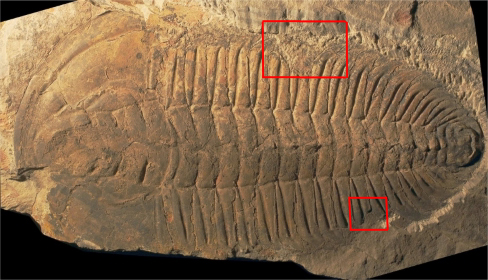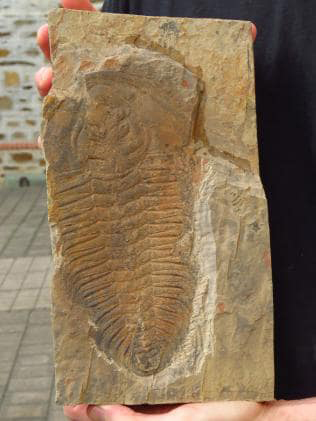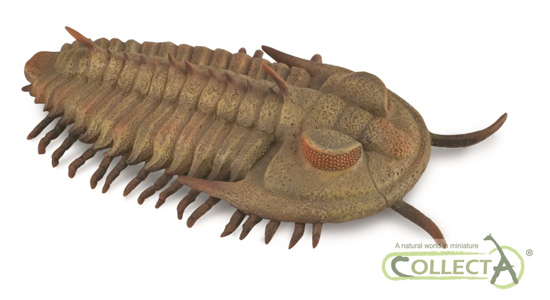Giant Trilobite was a Cannibal According to New Research
Researchers have conducted an extensive review of injured trilobites and disarticulated pieces of trilobite exoskeleton from the Emu Bay Shale Konservat-Lagerstätte on Kangaroo Island (South Australia). They conclude that the injuries caused to Redlichia trilobites were from attacks by other members of this genus. This is the oldest record of cannibalism recorded in the fossil record to date.
The picture (above) shows the CollectA Redlichia rex trilobite model.
To view this range of prehistoric animal figures: CollectA Prehistoric Life Models.
A Study of Redlichia Fossils from the Emu Bay Shale
The Cambrian explosion represents the rapid emergence of complex marine ecosystems and a huge burst of evolutionary activity that led to the establishment of virtually all the Animalia phyla recognised today. Whilst many palaeontologists do not like the phrase “explosion” as it implies a sudden event, opting instead to use the term “Cambrian radiation” to describe the emergence in the fossil record of abundant preserved shells and exoskeletons, the reasons for this change in the Earth’s ecosystems remains controversial.
It is thought that one of the main drivers of this evolutionary event was the development of predator/prey interactions. The proliferation of biomineralised exoskeletons and shells was a response to the evolution of the first predators capable of breaking through these defences.
Writing in the academic journal Palaeogeography, Paleoclimatology, Palaeoecology, researchers from the University of New England, (Armidale, New South Wales), Uppsala University (Sweden), the University of Adelaide (South Australia), the South Australian Museum and Cambridge University conducted an analysis of 38 injured specimens representing two large trilobite species from the 515-million-year-old Emu Bay Shale deposits (Redlichia takooensis and Redlichia rex).

Healed but scarred injuries on a fossil specimen of Redlichia rex. The red squares indicate areas of damage possibly caused by an attack by another Redlichia. Picture credit: Bicknell et al (Palaeogeography, Paleoclimatology, Palaeoecology).
Picture credit: Bicknell et al (Palaeogeography, Paleoclimatology, Palaeoecology)
Studying a Giant Trilobite
The team concluded that that the injuries they documented were caused by a durophagous (consuming hard parts of the skeleton) predator.
Specimens of both species show that most injuries are located on the posterior portion of the thorax, indicating that predators most likely attacked from behind or that intended prey presented the posterior portion of their trunk to the attacker when threatened or attempting to flee. Previous studies had indicated that Cambrian trilobites exhibit most injuries to their right side. This study refutes this, arguing there is no evidence for a preference for attacking either the right or left side of intended prey.
The injured specimens typically represent some of the largest individuals known for the Redlichia taxa. This suggests that bigger trilobites were more successful in fighting off an attack and recovering from their injuries. Smaller individuals were probably completely consumed and therefore the likelihood of finding evidence of an attack on a smaller fossil specimen was greatly reduced.

A near complete specimen of the large Cambrian trilobite Redlichia rex. Picture credit: University of Adelaide.
Picture credit: University of Adelaide
Redlichia rex
To read Everything Dinosaur’s blog post about the discovery of Redlichia rex: “King of the Trilobites” Discovered in South Australia.
The research team concludes that the scarred Emu Bay Shale trilobites represent the oldest record of cannibalism known to science.
The scientific paper: “Cambrian carnage: Trilobite predator-prey interactions in the Emu Bay Shale of South Australia” by Russell D. C. Bicknell, James D. Holmes, Stephen Pates, Diego C. García-Bellido and John R. Paterson published in Palaeogeography, Paleoclimatology, Palaeoecology.
Visit the Everything Dinosaur website: Everything Dinosaur.


